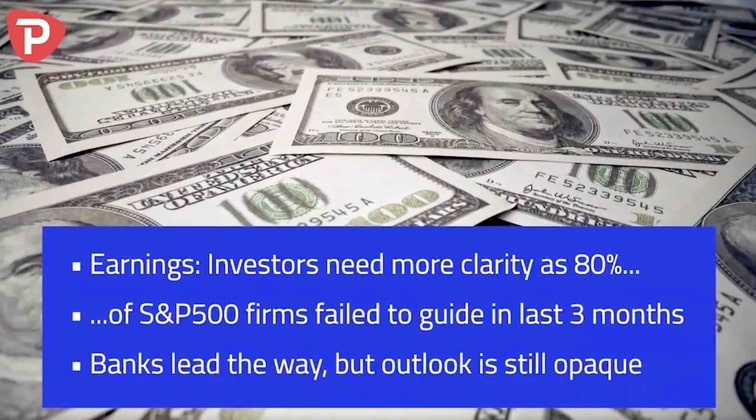- English (UK)
Analysis
Markets are focussed on the pandemic, lockdown, and economics as cities reopen for business. But both the Democrat and Republican National Conventions are scheduled for August, and from here we’ll see markets actively thinking about election probabilities and pricing in any relevant risk.
At the start of this year, markets were fairly confident the US would elect Trump for a second term - but a lot has changed since. Trump’s approval rating has fallen to 38% - a level where incumbents have historically struggled to bounce back from. Whereas betting markets have the odds of a Biden administration from 2021 north of 60%. It’s a huge turnaround since the start of the year, but with four months to go a lot could change yet.
Trump vs Biden election victory odds, according to PredictIt. Source: Bloomberg
The outcome of the election could bring a significant amount of change but markets are focussing mostly on two major themes here: 1) China and 2) Taxes.
Traders and investors know what to expect from Trump on China policy. Biden, once seen as a softer stance on China, has certainly evolved to a much harder stance over time. Sure Biden would be less likely to slap China with additional tariffs as punishment, but the US-China will remain fragile. On China policy, both candidates are a bearish case for markets, as the trade war stunted global trade and growth.
Taxes are the big uncertainty here. Trump slashed the corporate tax rate to 21% from 35%, a pro-business move designed to encourage more investment in the US economy. Critics note that benefits mostly flowed to wealthy shareholders rather than benefiting the wider US economy. Biden’s ready to reverse the tax cuts - not all the back to 35% but to a middle of the road 28%.
Often overlooked in the tax debate here though is the fact that the corporate tax cuts were mostly deficit financed, which is fiscally expansive. Although a Biden administration will introduce tax hikes, a proposed $2tn stimulus will be mostly deficit financed - still fiscally expansive - and the infrastructure spend might better distribute gains more widely, which is a good case for long-term economic health.
As the election starts to become a consideration for traders, we can see USDJPY 6-month volatility trading at a premium to short-term volatility. Although USDJPY hasn’t been behaving like a safe haven recently, it does have an historical record as the favourite vehicle to hedge election risk. A little closer to the time, perhaps after the party conventions in late August, we could start to see considerable flow into the JPY - especially if markets start to feel nervous about change under a possible Biden administration.
With four months to go, it’s time to think about the US election and if you’re ready for election volatility. A very important one for the trading radar.
| Date | Key election event |
|---|---|
| 17 - 20 August | Democratic National Convention |
| 24 - 27 August | Republican National Convention |
| 29 September | 1st Presidential debate |
| 07 October | Vice presidential debate |
| 15 October | 2nd Presidential debate |
| 22 October | 3rd Presidential debate |
| 3 November | Election day |
Related articles
Ready to trade?
It's quick and easy to get started. Apply in minutes with our simple application process.
The material provided here has not been prepared in accordance with legal requirements designed to promote the independence of investment research and as such is considered to be a marketing communication. Whilst it is not subject to any prohibition on dealing ahead of the dissemination of investment research we will not seek to take any advantage before providing it to our clients.
Pepperstone doesn’t represent that the material provided here is accurate, current or complete, and therefore shouldn’t be relied upon as such. The information, whether from a third party or not, isn’t to be considered as a recommendation; or an offer to buy or sell; or the solicitation of an offer to buy or sell any security, financial product or instrument; or to participate in any particular trading strategy. It does not take into account readers’ financial situation or investment objectives. We advise any readers of this content to seek their own advice. Without the approval of Pepperstone, reproduction or redistribution of this information isn’t permitted.


